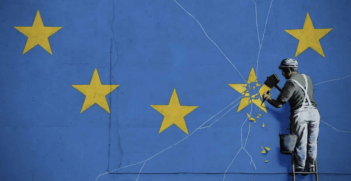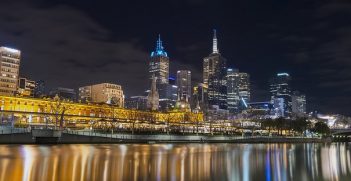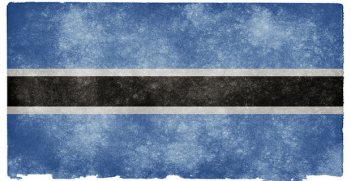Syria: A Bumpy Ride Ahead

The Turkish incursion in Syria has spurred the involvement and actions of the Turkish, Syrian, Russian and US governments and their armed forces. Prevention could require early intervention by UN peacekeeping forces.
Turkey’s military incursion into north-eastern Syria on 9 October is intended to create a 500km long by 30km wide “safe zone” along the border to prevent continuing cross-border support to Kurdish separatist/terrorists in Turkey from their Syrian counterparts. They also hope to relocate there large numbers of Syrian refugees from Turkey. But the incursion has unleashed a chaotic, some say catastrophic, situation with serious political, military and humanitarian implications.
This incursion, code-named Operation Peace Spring, has spurred the involvement and actions of the Turkish, Syrian, Russian and US governments and their armed forces, the Kurdish dominated Syrian Defence Force (SDF), the deployment to and within Syria of both pro-Turkey and pro-Syrian government militias, the proposed re-settlement from Turkey of potentially some 1.5 million Syrian refugees into the safe zone, and displacement of thousands of other Syrians from that zone.
How these events contribute to the existing complexities of the civil war in Syria, has yet to unfold. They may broaden and prolong those complexities. Or they could contribute to a long-elusive political settlement within Syria.
Turkey’s concerns: Syria and Turkey share a common border of some 800 km, the majority of which is dominated on the Syrian side by the Syrian Democratic Forces (SDF). The SDF largely comprises Kurds from north and north-eastern Syria, and is led by and a majority of its members belong to the Kurdish People’s Protection Units (YPG). The YPG, which seeks autonomy within, or preferably separation from Syria, was trained and armed by the US some five years ago to fight the then rapidly expanding forces of the Islamic State (IS) caliphate. And according to various US sources, the YPG was both a competent and the best fighting force within the SDF.
The complication, however, is Turkey’s designation of the YPG as a terrorist organisation, being the military wing and provider of support and weapons to Turkey’s Kurdish Workers Party (PKK), an internationally designated terrorist and separatist organisation. The PKK has been fighting an insurgent war against the Turkish government for more than 30 years, and is responsible for the deaths of over 40,000 civilians and members of the Turkish military.
Turkey’s President, Recep Tayyip Erdogan, made strong but unsuccessful representations to President Obama in 2015 opposing the training and arming of the YPG because of their security concerns above; defeating the IS through what Turkey saw as a ‘marriage of convenience’ at the expense of a NATO ally, took US precedence. However, Turkish concerns morphed into urgent cross-border contingency planning in 2018 when it became clear President Trump was seriously considering withdrawing US forces from Syria, which by then were a key constraint to YPG-PKK support. Various local and regional contacts I spoke with in Lebanon earlier this year assessed that a Turkish incursion into Syria was only a matter of when, not if. In sum, an incursion was no surprise to any of the involved stakeholders.
Trump’s decision: Whether Trump’s nod to Erdogan earlier in October to launch his incursion was in the knowledge it was about to happen anyway, and he withdrew US border forces to avoid them becoming unavoidably involved, is not known. Also unknown is whether Trump had simply decided US interests were best served by pulling out, and letting local stakeholders sort it out their way. Both are probable.
It is known that Trump’s advisers strongly opposed his decision. This “stab in the back” to the YPG, however much or little regional sympathy there was for them, was widely seen as further evidence of US unreliability as an ally, and a general decline of US interest in and commitment to the region. Trump’s subsequent decision to re-engage, to impose sanctions if Turkey used excessive force, and call for a cease fire, suggests he is now listening to his advisers. But whatever steps Trump now takes, the damage to reputation has now been done.
The incursion itself: As of writing (17 October) it is difficult to comment accurately on the status of fighting between the Turks and YPG, the movements of the Syrian government and Russian armed forces, and the status of guarding of IS detention camps, due to the significant use of disinformation by all key stakeholders.
What appears to be accurate is that Turkey informed Syria’s President Assad and the Russians beforehand of their incursion, assuring both their troop deployments were ‘temporary’ and would be withdrawn once the safe zone was stable and the YPG threat was containable. Turkey also strongly emphasised its commitment to avoid any clash between its forces and those of Assad. Neither Assad nor the Russians objected in principle. Turkey also reportedly informed all or most residents in the safe zone area of their incursion, assuring non-YPG civilians they would not be targeted, and should identify and separate themselves from the YPG to avoid accidental targeting. In many cases this separation involved the ‘temporary’ outflow of these civilians from YPG strongholds, particularly in border towns.
The message conveyed to the YPG was they should vacate the safe zone, or face the military consequences. Many YPG have chosen not to do so and are strongly resisting Turkish troops and their supporting militia, especially in urban areas. The YPG are reportedly holding ground in major towns such as Tal Abyad and Ras al-Ain (some 80 km apart in the central safe zone area) but not in the smaller towns and villages. Both sides have reported atrocities by the other as part of their information/disinformation programs.
The YPG have also claimed, possibly as a disinformation scare tactic, their inability to continue guarding IS detention centres outside the safe zone. Some reports claim detainees have escaped due to the YPG guards being redeployed to fight the Turks, others claim they have been deliberately released by the YPG. There is no known independent reporting to verify these reports, but there is no doubt about the complications if large numbers of armed IS enter the battlefield. But who would they target?
The Syrian government and Russian armies: Early reports claim that the Syrian and some Russian armed forces moved quickly to pre-empt Turkish occupation and fill as many vacuums as possible created by the retreating YPG, particularly at the western end of the safe zone, including the strategic town of Manbij. Syrian and Russian forces are likely to continue to exploit these opportunities, with a nod from Turkey where the YPG threat is contained.
The future of the YPG. There are various reports that, to escape the Turkish offensive, the YPG are now seeking a political accommodation with Assad that would provide some form of acceptable semi autonomy as part of a revised national political structure. This concept has been raised previously, and if workable and acceptable also to Turkey, could go some way to re-establishing stability within Syria. Whether this eventuates remains to be seen
Continuing conflict and humanitarian issues: The above aside, other areas of conflict and instability remain. The major military confrontation between Syrian forces and anti-Assad and pro-al Qaeda groups in Idlib province, which is adjacent to Turkey’s south-western border but outside the safe zone, is on-going. Concerns have also been raised about the political allegiance and discipline of many of the Turkish-trained Syrian militia being relocated into the safe zone, the implications of resettlement on land in areas vacated by displaced residents, and the status of IS detainees, including any groups that may have escaped detention and reorganise as active, armed militants. An overarching concern, given the bitter and brutal history of past political and ethnic conflict between many of the above, is avoiding any outbreaks of human atrocities motivated by deep hatreds and revenge. Prevention could require early intervention by UN peacekeeping forces.
Ian Dudgeon is a presidential associate of the AIIA.





